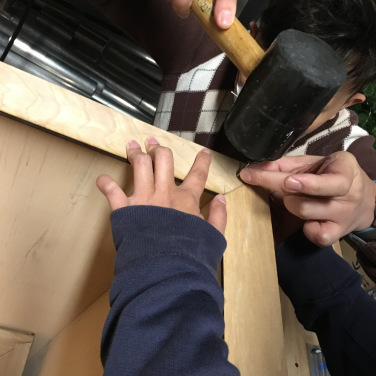Anger Flanker (PhyComp Final)
- Ridwan Madon
- Dec 13, 2017
- 3 min read

The Final Chapter
I feel like I have reached to the last chapter of a book for our interactive piece. Although, there will always be room for further improvement. All said and done, I am truly happy at the stage we are right now. The countless hours of research, planning, working out with the codes and piecing everything together, critique and user testing sessions was truly a great experience to be had. The last stretch for the week before the final presentation and our winter show was more to fine tuning all the loose ends and my team members and I are satisfied with the outcome.
Just to recap on our interactive piece, Anger Flanker is an arcade-game inspired space that requires physical interaction that simulates an act of anger. The primary objective of the interactive piece is to create an outlet where user could vent their frustration/anger.
Piecing the pieces
As we already know by now, user testing is paramount. We took our user testing sessions seriously and considered the collective feedbacks given. Our previous user testing caught us by surprise, we did not expect anyone to react positively, it almost blew everyone out of proportion. It was the first time that they saw the whole interactive piece in a proper enclosure, however, they instantly knew what was to be done. I believe the splash page that I animated helped tremendously.

Refining the connection
It was important that we made all the connections right, our first user testing that we had, we used mostly crocodile wires for the connection. It was a horrible experience because the wires kept coming off when the user test it. Of course this was to be expected, but, it was something to be mindful about. Even after we solder the wires together, we invited a few of our peers to user test it, one of them even broke the FSR connection with the wire. We figured that it was our method of soldering and it might have caused it to break. We were very careful to solder it the next round.
Tom pleasantly suggested to use rubber feet to create more impact on the FSR which helped tremendously.
Refining the enclosure
What started off with just using cardboard for the enclosure, it then transcended to using plywood because of the robust nature and since our interactive piece is very physically inclined interaction, we cannot afford to have it broken to pieces.
We secured the two towers into one piece to make it more secure, the impact from the user would not affect the towers to move around which improves the user experience. We also secured the perimeters of the interactive piece that covers the LED light, we felt it was necessary to make the perimeters more sturdy.
Refining the code
We were informed by Tom that there should be a distinct difference between smashing the FSR and pressing the FSR. The solution was to figure out the velocity for the user. We tried to juxtapose the velocity and time when the user choose to either smash or press against the tower.
We came up with a diagram to better understand the user experience.

We were worried that the user would keep pressing on the FSR, by doing so, the FSR will read the sensor which will activate the interactive piece. Our initial code was based on the user passing a certain value threshold, when this value has surpass the threshold, it will read as being activated. This definitely would cause a lot of problem for us because we want the user to experience the interaction with utmost attention without missing out any pages.
Therefore, to solve this issue, we created a timestamp in our code. When the user begin to touch the sensor, we will record his time. The time between touching the sensor will then activate an action if it passes a certain threshold. This threshold is determined by the physical power of the user.
Reopening paths
We were very surprised when the previous user testing group came as a bunch of users started to interact with the piece communally, it paved a new avenue for the interactive piece.
Improvements
If there is an area to improve the work further, it would definitely be creating a mic stand or making the enclosure more intimate.
Acknowledgement
I am truly grateful for the guidance and utmost patience and professionalism by Tom Igoe. If it was not for him, his vast knowledge in the subject, the project would not be able to come to fruition.







































